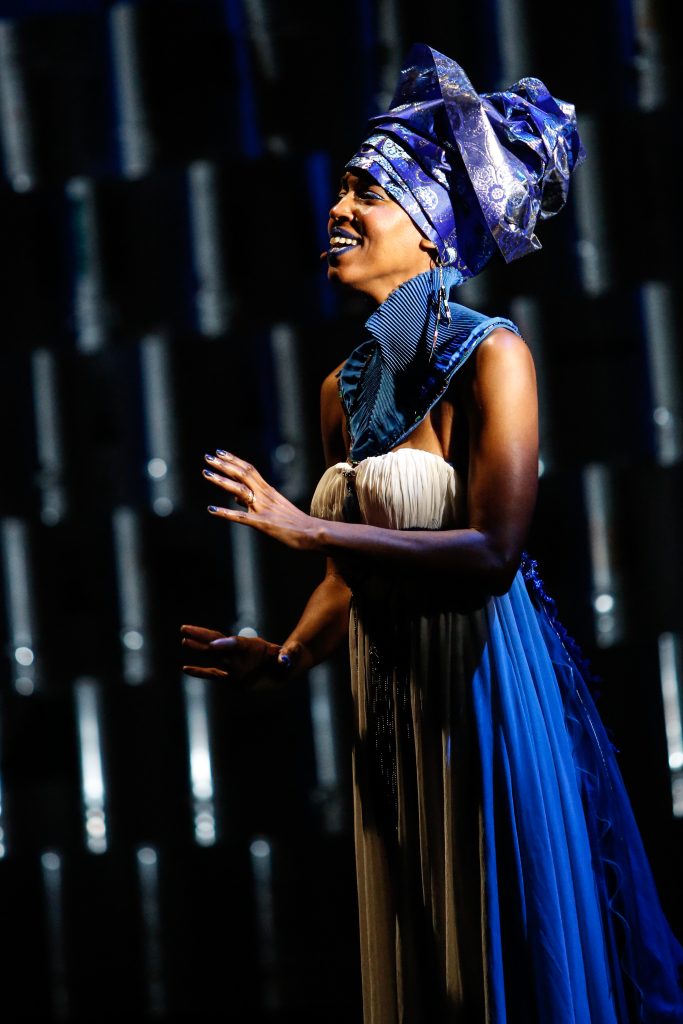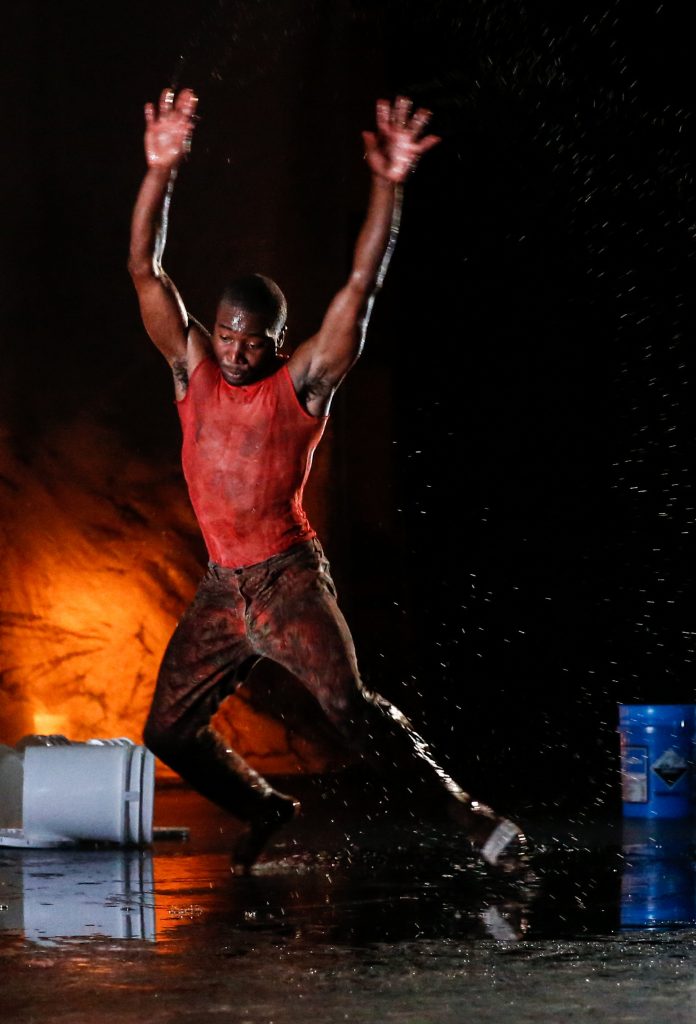
When I am sitting in the audience, I have a certain expectation: I want to be rewarded.
By the end of the performance, I want to take away a vision, a purpose or even just a feeling that makes me believe that the whole experience was worth my while. In a full-length work, this expectation is even more pronounced as there isn’t the option (as there is in a repertory program) of choosing what I liked and letting those I didn’t fall aside.
I can’t say that I felt rewarded when I saw Contra-Tiempo Urban Latin Dance Theatre perform Agua Furiosa on Feb. 9 at the Kravis Center’s Rinker Theatre in West Palm Beach. Don’t get me wrong. Contra-Tiempo is a dynamic young company and its strong focus on community programming and interaction is very impressive to say the least, but when you are sitting in the theater with a playbill in your hand, you want to see something artistically honed.
Words like “potential” or “promising” came to mind. There were some strong moments that peaked interest but Agua Furiosa was uneven. Usually the dance presentations of the P.E.A.K Series at the Kravis Center are some of the most cutting-edge and thought-provoking dance seen in Palm Beach County, but Agua Furiosa came across as lacking cohesion.
The music score and sound design by d. Sabela grimes was a consistent highlight of the show. The hip-hop fusion composer, who is also a writer, choreographer and educator, created a rich electronic composition for Agua Furiosa that was more Afro-Cuban than salsa. Layered with voice, spoken words and poetry by Pyeng Threadgill, the soundtrack was the driving force of the work.
Peppered with some serious social issues as well as some catchy theatrical moments, there were also voids — unfortunate times when any artistic momentum that had been gained was lost. One example was having to watch the performers clean up the mess they had made dancing with countless plastic water bottles and white water pails. The process of strewing the stage with the props had at times been interesting but watching the mess get cleaned up certainly was not. During disjointed moments like this, it was hard to maintain interest.
The program was filled with lengthy notes, descriptions, references and character summaries, all of it far more heady than the work seen onstage. The piece was inspired by the topic of the morality of colonization as seen in William Shakespeare’s The Tempest, and specifically in the characters of Caliban, Prospero’s disfigured slave, and Sycorax, the mother of Caliban. In Agua Furiosa, Sycorax is embodied as Ella, the singer, whose character is also based on Oya, the Afro-Cuban diety of wind and storm.
There were other themes as well: destructive water elements (drought, floods and storms), intolerance of racial differences, gun violence. Some of these themes were introduced as spoken word or song recorded in the sound score or performed live and others were illustrated by the use of props such as the water bottles and pails.
The eight dancers, dressed in everyday clothes, were full-throttle — dancing with energy and commitment — on the small Rinker stage that was draped with a pale blue translucent backdrop that constantly rippled like water in the background. The rest of the stage was pared down to the brick walls exposing the lights, props as well as the entrances and exits. The performers also utilized the house and other off-stage areas.

Electra Weston, who played Ella, was regally costumed in long flowing dresses and African head wraps. Acting as the narrator, she sang her tale as she walked the aisles of the theater, crossed the stage, or appeared high on the scaffolds hanging from the ceiling. Her voice was rich and inviting. Her character was alluring and unpredictable, though with time it lost its intrigue.
Christopher Cuenza performed a vibrant solo in which he isolated and accented the music’s rhythm in different body parts in a style called popping; later, changing styles, he let the movement ripple through him as if he didn’t have a bone in his body.
There was a very long section in which umbrellas were utilized in varying ways ending with the more successful imagery of the closed umbrellas being used as guns or rifles. A strong theatrical moment came when the group realized that the guns needed to be laid down but Cuenza refused, threatening to kill a friend rather than give up his weapon.
The ensemble sections were well-danced and the gestural movement was effective with its hints of salsa sprinkled in. The stirring words and phrases in the sound score again seemed to give structure to the choreography, making me wonder which came first in the creative process: words or movement?

Samad Guerra gave an extraordinarily powerful performance in his solo. Caught in emotional turmoil, he kept repeating movements of falling forcefully to the ground only to instantly regain his footing — all done with enormous speed and determination amid water puddles of onstage. Suddenly he stopped, and without catching his breath expertly delivered an irate and intense monologue.
There was an announcement before the show began that “gave permission” to the audience to respond in whatever way they wanted in the tradition of “call and response.” Whether it was an issue of mood or culture, this audience didn’t choose to engage. Perhaps it was just Friday night syndrome (hard day at work with too much traffic … wait, was Trump in town?), but the fact is that quite a few people left during the show. One audience member actually collided with a dancer (tripping her and possibly injuring her) as both were attempting to exit in the theater in the dark.
I learned in the post-performance talk with Artistic Director Ana Maria Alvarez that the space had been an enormous challenge for the company. When they arrived, they discovered that the stage had some key areas that were not useable. Therefore the use of the house and other areas during the performance was more out of necessity than part of the original concept of the work. However, I actually thought that the use of the additional space added another level of interest to the production.
Alvarez also spoke about the creative process for Agua Furiosa, which premiered in 2016, and her working relationship with her company, which she founded in 2005. The company is multi-cultural and has developed deep roots in their Los Angeles community. This continuous intense artistic and political interaction has been fuel to create art that is relevant to today’s urban communities.